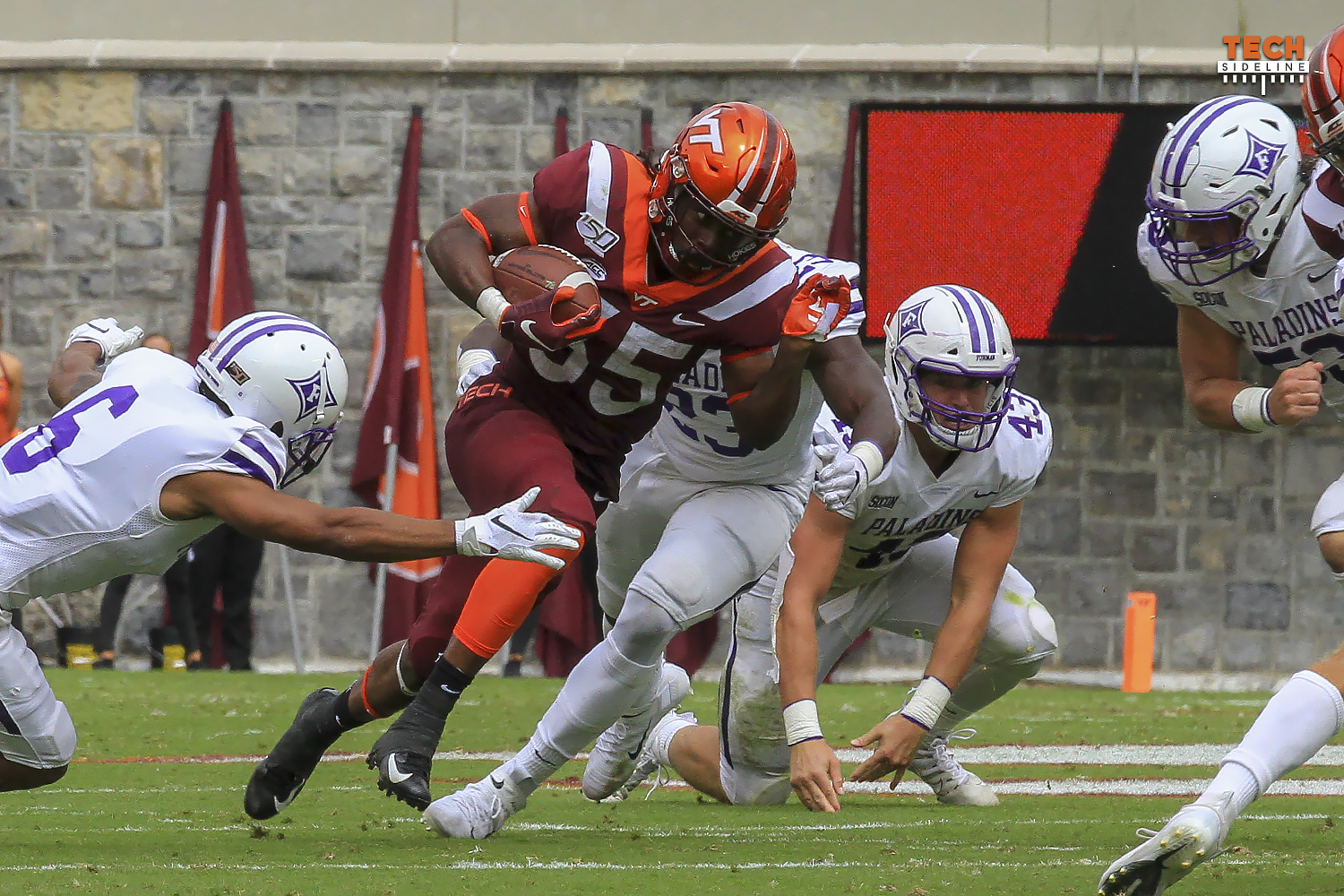
I like breaking down the mechanics of plays and their execution, but I don’t care for analyzing play calling. If a single call is blindingly “good” or “bad” because of talent discrepancies, tendencies, results, or whatever, I’ll speak to it. But looking at them in aggregate doesn’t do it for me. That’s because breaking down a game’s worth of play calls is a pile of mind-numbing work. However, calls from the booth have been a hot topic lately, so for this article I’ve poked around in the Furman game to see what popped up with Coach Cornelsen’s plays of choice.
First, though, breaking down games play-by-play is a big pain. Teams carry a fixed number of plays into a game. They have the basics—Inside Zone, a Smash Concept, etc.—and then a few extra plays that aren’t as frequently used on top of that. That means evaluating changes in play calling can and (often does) go beyond calling plays. Instead, it could be that a team runs power, but in the first quarter it’s with the tailback aligned away from the play, and in the third he’s aligned on the same side. It could be they pull the guard from the strength of the formation in the first half, and then from the weak side of the formation in the second. It could be they run it from a heavy formation and use an H-back to kick the end in the first half, and in the second they go to a full spread formation and don’t kick anyone. They could run to the left one half, to the right another. They could run to the boundary one half, and to the field in the other. The story for Tech’s struggles and achievements against Furman is that the most important trends in how they adapted to the game didn’t require much digging.
Be the Bully
Coach Cornelsen’s theme for the game was putting the ball in the hands of his most-athletic guys in the most direct and safest ways possible. He didn’t want to rely on deep balls with long waits in the pocket, or getting too complicated in the option game. His first stab at this approach was with the screen game, using both slow screens to the backs and quick screens to the receivers. The screen game also protected Willis.
You can imagine from the sacks Tech suffered that the Hokies were shy about passing the ball. Willis had 21 attempts on the day, while Hokie rushers were credited with 40 runs. Even if you take out sack yardage, that’s a grinding approach to running the ball. And out of those passes, most were some type of screen. In fact, Willis had nine screen attempts behind the LOS; all were completed, meaning they accounted for more than half of his 17 completions on the day. Finally, Cornelsen had to see how bad Furman’s defense was defending GSU players in space. He saw their defense break down against fast movers and figured Tech could do the same.
...Subscribe to read full story
Tired of low effort articles and clickbait? So are we. Subscribe to read great articles written by a full-time staff with decades of experience.
Already a subscriber? Login Here



